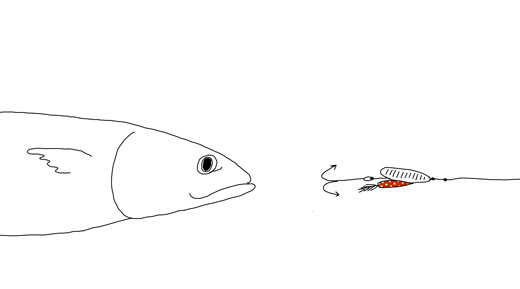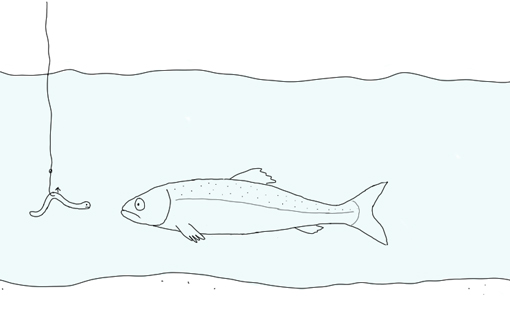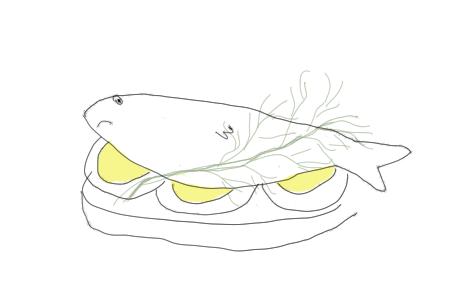
When I was a little girl we used to go out fishing in a boat on the west coast of Sweden. Mostly we caught cod and mackerel but sometimes we also got garfish. The best thing about these boat trips was when we stopped at some tiny unsettled rocky island to have lunch. We collected firewood and broiled mackerel over an open fire. The fish was just cleaned and gutted, seasoned with salt and lemon and stuck on a wooden stick. Fantastic!
(for two persons)
one whole mackerel
sea salt
a neutral oil
butter
one shallot, finely chopped
one teaspoon brown mustard seeds
fresh tarragon, chopped
Rinse the whole mackerel and fillet the fish. Keep the skin on the fillets. If necessary pull out the remaining bones with a pair of pliers. Salt the fillets and let them cure for about half an hour. I suggest you make a fish stock with the remaining parts such as the head and the bones (not the guts).
Fry the Mackerel fillets in the oil on both sides until meat is white. At the same time melt some butter in another pan and saute the chopped shallot on low heat until soft and transparent. Add mustard seeds and fresh tarragon. When the mustard starts to pop its done. If necessary, to your own taste, add some more butter. Pour over the mackerel fillets and serve immediately with, for example, the mustard sauce below and some fresh summer potatoes.

Mustard Sauce
(for one mackerel)
200 ml (little more than ¾ cup) sour cream
one teaspoon mustard
dill, chopped
some lemon juice
honey (optional)
Stir in mustard and dill into the sour cream. Season with lemon and honey.


